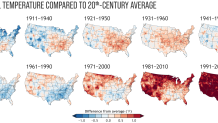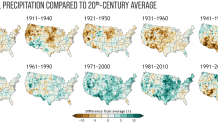Every decade, the National Oceanic and Atmospheric Administration redefines our weather averages. Our averages are defined by a 30-year span of time. That 30-year average is made up of an overlapping 20 years and a new 10 years.
For example, when you hear the First Alert weather team talking about the temperature being a certain number of degrees above or below average, that average was based on data between 1981 and 2010.
STAY IN THE KNOW
Watch NBC10 Boston news for free, 24/7, wherever you are. |
|
Get Boston local news, weather forecasts, lifestyle and entertainment stories to your inbox. Sign up for NBC Boston’s newsletters. |
But starting in the first week of May, the new meteorological data range is from 1991 to 2020. While NOAA has calculated averages for temperature, rainfall and other variables that have come to represent the new "normals" of our changing climate, we have to ask -- how does global warming affect these new averages?
Globally, because of anthropogenic climate change, the planet has been warming. Our average high temperatures, in many cases, have increased.
Get top local stories in Boston delivered to you every morning. Sign up for NBC Boston's News Headlines newsletter.

September and March are outliers and are slightly cooler than the previous 30-year average, but all the other months are warmer, except for June, which remained unchanged.
Overnights have gotten warmer and all months except for February and November saw a tick up. February and November didn’t see any change to the 30-year average.
When it comes to rainfall, the annual average precipitation is down slightly, but only by a quarter of an inch.

Snow is actually 5.3” high than the 1981-2010 average. Why? Certainly, the winter blitz of 2015 helped skew the numbers, but a warmer atmosphere holds more moisture, and warmer ocean waters can provide more moisture.
There are still cold periods during the winter and it’s common for at least some winter storms to coincide with that cold. It’s forecast that as the atmosphere continues to warm, there will be less and less cold, so average snowfall will likely drop off again in the future.
Our warmer than average days going forward won’t seem as warm. It’s important to compare this new 30-year average with century long data and you’ll certainly see the impacts of climate change.
More Climate Change News
The way we tell the climate story will need to change, so viewers can understand the true gravity of the climate crisis. Instead of focusing on how much above average our temperatures are, the number of days with above average temperatures paints a far more accurate picture.
Tune into NBC10 Boston on Thursday, May 6, for more from "Adjusting to Climate Change."



